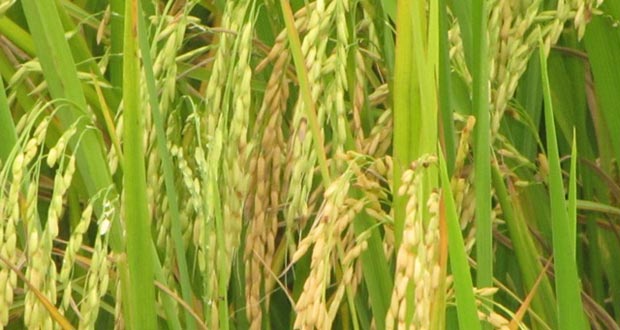
First rice crop exceeds 300,000 tonnes
THE rice industry has exceeded 300,000 tonnes of rice as the first crop production for 2014, and could surpass 600,000 tonnes by December 2014.Minister of Agriculture, Dr. Leslie Ramsammy, proudly made this announcement Monday during the launch of the five new subjects earmarked for the Caribbean Examinations Council (CXC) Caribbean Advanced Proficiency Examination (CAPE) Examinations in 2015.
Minister Ramsammy stated that the target achieved is a first in Guyana’s history, as well as in the Caribbean. He noted that the claim 10 years ago that the country could produce 500,000 tonnes by 2020 was regarded as impossible; however Guyana did achieve this benchmark more than five years early. In 2013, Guyana produced 535,000 tonnes of rice.
“Six hundred thousand tonnes in 2014 is a real possibility,” the minister stated, pointing to the already achieved 300,000 tonnes and the time that is left for the achievement to be made. He stated confidently that he expects to be making that announcement in early December.
The minister attributed the increased rice production to science and technology which has transformed the rice sector in Guyana, ‘and it must transform the agriculture industry in our Region,” he stated.
The trend over the last few years has been one of increasing rice production, but in 2011, for the first time, the 400,000-tonne mark was passed and repeated in 2012 and 2013. It is expected to someday overcome the barrier which will bring Guyana in line with the world’s largest producers of rice. As such, focus is being placed on exploring new and emerging global markets, tackling the crucial and critical issues to facilitate increasing production.
Rice production was at its lowest in Guyana in the late 1980s, due to neglect of the industry which saw a lack of sound agricultural policies and programmes, and little or no investment in agricultural infrastructure and research and training. Today, there are greater investments in agriculture infrastructure, education and training of farmers, research, and more guaranteed markets as well.
Secure drainage, new and improved farming technologies and new rice varieties are among some of the interventions over the years, on the part of government that have been fuelling the rice industry’s growth. Government has also moved to secure several markets for rice farmers, the largest being with Venezuela.
Government, cognisant of maintaining the strong performance of the rice industry, has set aside in Budget 2014 the sum of $500M to help maintain its competitiveness. The industry will also benefit from this year’s investment in drainage and irrigation.
(GINA)
